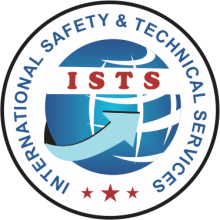Consultancy services
- Home
- Consultancy services
Empower Your Organization with
Tailored Consultancy Solutions
Unlock the expertise of our consultancy services to streamline your operations and enhance your safety and environmental compliance.
Health Safety Management consultancy involves providing expert advice, guidance, and support to organizations in managing health and safety risks within their operations. This consultancy typically encompasses various aspects such as compliance with regulations, implementing best practices, assessing risks, developing policies and procedures, training employees, and continuously improving safety performance.Here’s an overview of what Health Safety Management consultancy entails and the benefits it can offer;
Regulatory Compliance, Risk Assessment and Management, Policies and Procedures Development, Training and Education, Audits and Inspections, Culture of Safety, Incident Investigation, Cost Reduction, Enhanced Reputation, Continuous Improvement.
Fire Safety Management consultancy involves providing expert advice, guidance, and support to organizations in managing fire risks within their premises. This consultancy encompasses various aspects such as fire risk assessments, development of fire safety policies and procedures, implementation of fire safety measures, staff training, and compliance with fire safety regulations.
Here’s an overview of Fire Safety Management consultancy and its benefits; Fire Risk Assessment, Fire Safety Policies and Procedures, Compliance with Regulations, Fire Safety Measures Implementation, Staff Training, Emergency Planning, Risk Reduction, Property Protection, Business Continuity, Reputation Management.
Environmental Management consultancy involves providing expert guidance, support, and solutions to organizations aiming to minimize their environmental impact, comply with regulations, and adopt sustainable practices. This consultancy encompasses various aspects such as environmental audits, risk assessments, development of environmental policies and management systems, pollution prevention, resource conservation, and sustainability initiatives.
Here’s an overview of Environmental Management consultancy and its benefits; Environmental Compliance; Environmental Impact Assessment (EIA); Development of Environmental Management Systems (EMS); Pollution Prevention and Control; Resource Conservation and Efficiency; Sustainable Practices; Stakeholder Engagement and Communication; Risk Management; Brand Reputation Enhancement; Legal and Financial Benefits etc.
Quality Management consultancy involves providing expert guidance, support, and solutions to organizations seeking to improve the quality of their products, services, and processes. This consultancy encompasses various aspects such as quality audits, development of quality management systems (QMS), implementation of quality improvement initiatives, training, and compliance with quality standards.
Here’s an overview of Quality Management consultancy and its benefits; Quality Standards Compliance, Development of Quality Management Systems (QMS), Process Improvement, Customer Satisfaction Enhancement, Risk Management, Supplier Quality Management, Employee Training and Engagement, Data-Driven Decision Making, Cost Reduction, Competitive Advantage etc
Fire Fighting Services
Fire Prevention Gap Analysis and Study
A Fire Prevention Gap Analysis and Study assesses existing fire prevention measures to identify gaps and areas for improvement in fire safety protocols. This comprehensive analysis evaluates factors such as building layout, fire detection systems, emergency exits, and employee training. By comparing current practices to industry standards and regulatory requirements, the study highlights deficiencies and recommends corrective actions to enhance fire prevention and preparedness. Through detailed examination and stakeholder involvement, organizations can prioritize investments in fire safety measures, minimize risks, and ensure compliance with fire safety regulations.
Development of Fire Management System
The development of a Fire Management System involves designing a comprehensive framework to prevent, detect, and respond to fire incidents effectively. This process includes assessing fire risks, establishing emergency procedures, and implementing fire prevention measures. Through the integration of fire detection systems, emergency response protocols, and employee training, the system ensures swift and coordinated action in the event of a fire. Regular drills and exercises are conducted to test the effectiveness of the system and identify areas for improvement. By prioritizing fire safety measures and fostering a culture of preparedness, organizations can mitigate fire risks and protect lives and property.
Maintenance and installation of Fire Extinguishers
Refilling, maintenance, and installation of fire extinguishers involve ensuring these crucial firefighting tools are operational and ready to use in the event of a fire emergency. This process includes regular inspections to assess extinguisher condition, refill or recharge when necessary, and install extinguishers in strategic locations according to fire safety standards. Trained professionals conduct routine maintenance checks, such as pressure tests and inspections of seals and hoses, to ensure extinguishers function properly. By prioritizing timely refilling, meticulous maintenance, and strategic installation, organizations can enhance fire safety preparedness and protect lives and property effectively.
Fire Emergency Preparedness and Response Plan
A Fire Emergency Preparedness and Response Plan outlines procedures and protocols to effectively respond to fire incidents and minimize risks to life and property. This comprehensive plan includes measures for fire prevention, early detection, evacuation, and emergency response. It identifies roles and responsibilities, establishes communication protocols, and designates assembly points for evacuees. Additionally, the plan outlines strategies for coordinating with emergency services and conducting drills to ensure readiness. Regular reviews and updates to the plan are conducted to address changing conditions and maintain effectiveness. By prioritizing preparedness and rapid response, organizations can mitigate the impact of fire emergencies and safeguard the well-being of occupants.
